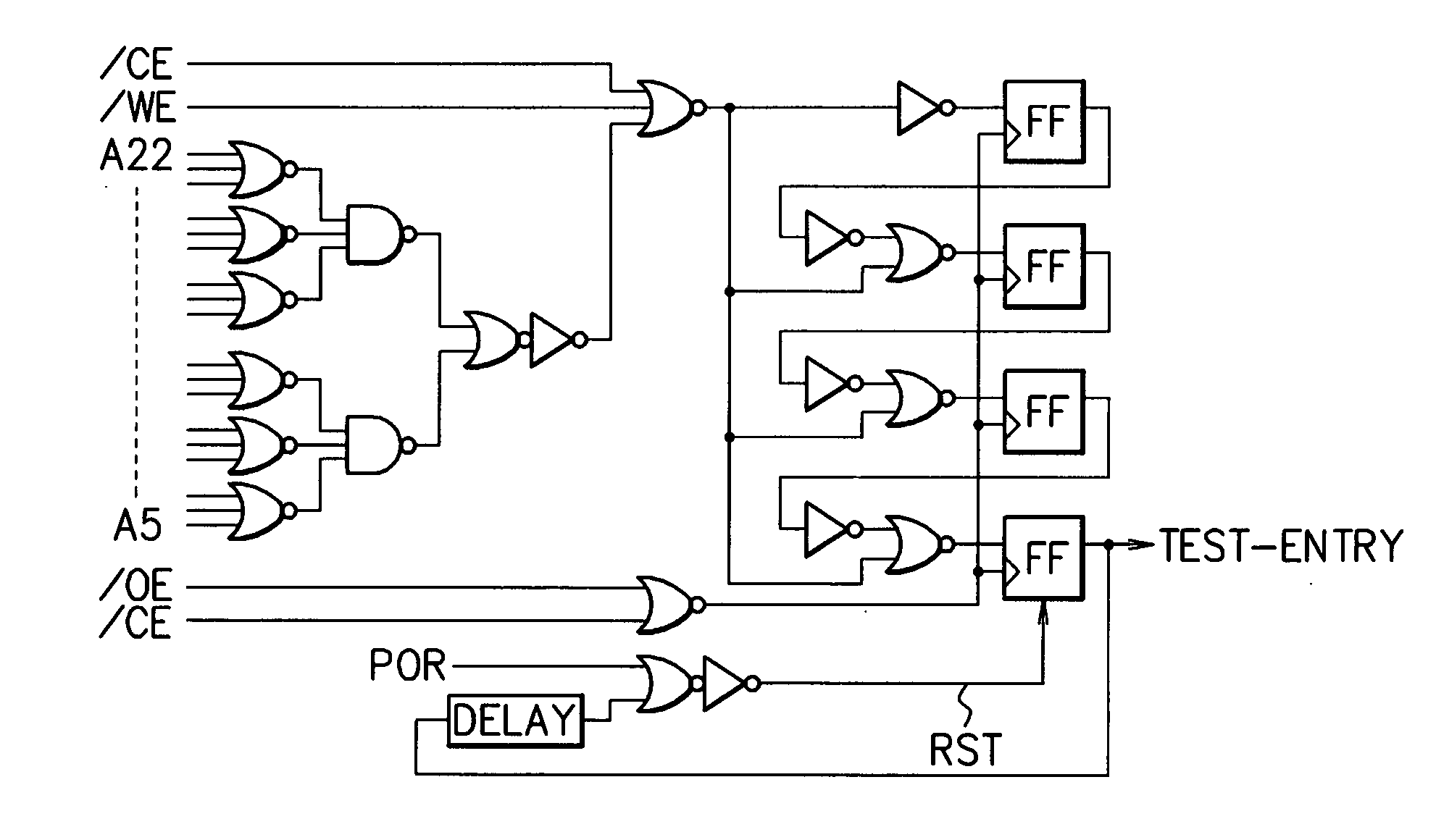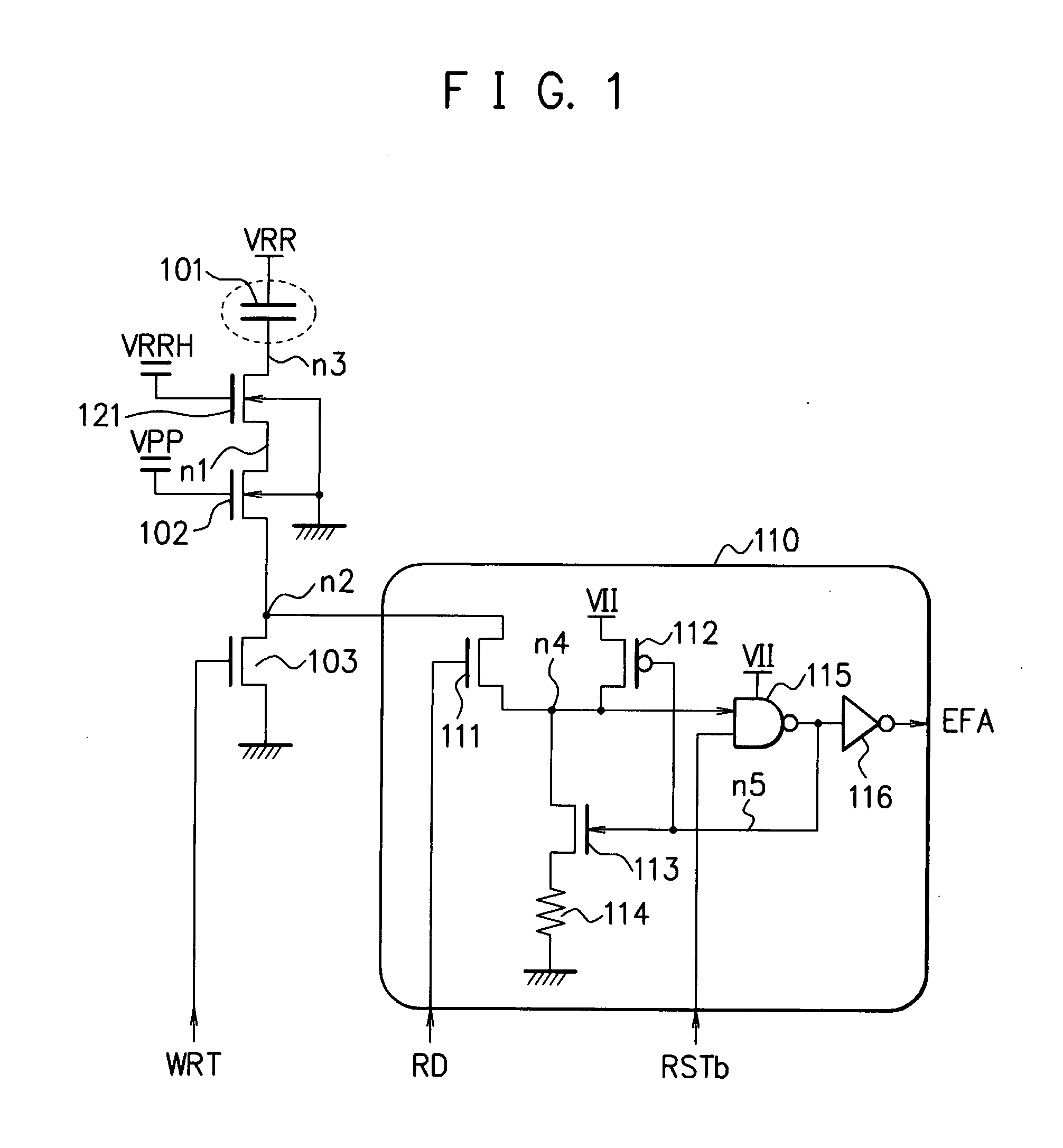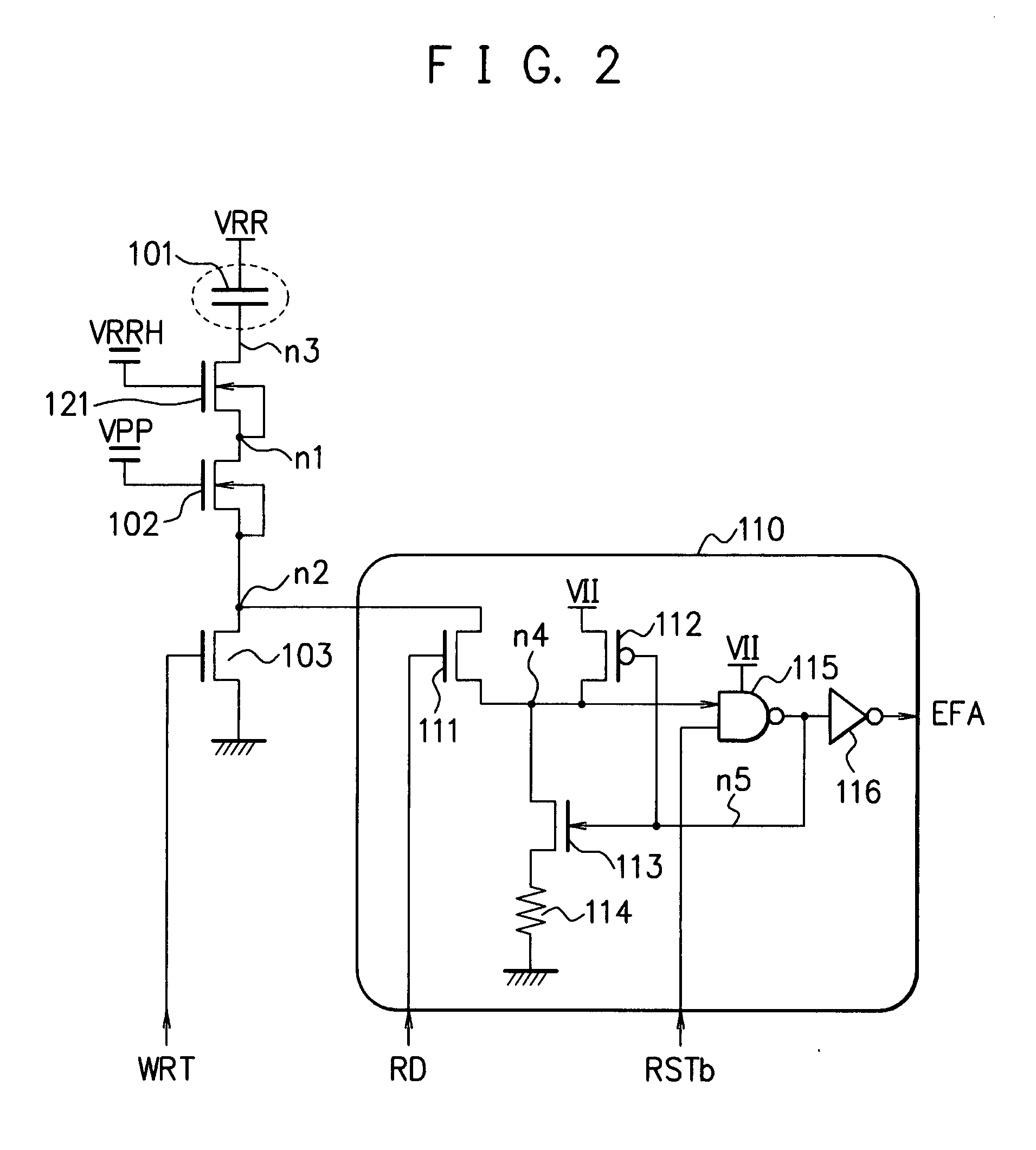Electric fuse circuit and electronic component
a fuse circuit and electronic component technology, applied in the direction of semiconductor devices, semiconductor/solid-state device details, instruments, etc., can solve the problems of insufficient reliability, inability to properly perform writing, and inability to radiate laser beam ls after packaging, etc., to achieve high reliability
- Summary
- Abstract
- Description
- Claims
- Application Information
AI Technical Summary
Benefits of technology
Problems solved by technology
Method used
Image
Examples
embodiment 1
[0050]FIG. 27 is a diagram illustrating an exemplary configuration of a semiconductor memory chip according to Embodiment 1 of the present invention. An electric fuse circuit 1501, which is a nonvolatile ROM for storing the address of a defective memory cell in a normal memory cell array 1503, outputs the address of the defective memory cell to an address comparator 1502. The address comparator 1502 compares the address of the defective memory cell with an inputted address and then outputs the result of the comparison of the two addresses to the normal memory cell array 1503 and a redundant memory cell array 1504. In the case where the two addresses do not coincide with each other, the normal memory cell array 1503 reads data DQ from or writes the data DQ in the memory cell corresponding to the inputted address. In the case where the two addresses coincide with each other, the redundant memory cell array 1504 reads data DQ from or writes the data DQ in the memory cell corresponding ...
embodiment 2
[0065]FIG. 2 is a diagram illustrating an exemplary configuration of an electric fuse circuit 1501 according to Embodiment 2 of the present invention. In contrast to FIG. 1, in FIG. 2, the respective back gates of the transistors 102 and 121 are connected to positions different from those in FIG. 1. In FIG. 1, the respective back gates of the transistors 102 and 121 are connected to the ground. Accordingly, when 8 V is applied to the drain node n3 of the transistor 121, the electric-potential difference between the back gate and the drain node n3 is 8−0=8 V, i.e., a high voltage; thus, the PN junction may be broken.
[0066]In the present embodiment (in FIG. 2), the back gate of the transistor 121 is connected to the source node n1. The back gate of the transistor 102 is connected to the source node n2. When, through writing, the capacitor 101 becomes conductive, the drain node n3 of the transistor 121 becomes 8 V. Because the gate voltage VRRH of the transistor 121 is 5.5 V, the sourc...
embodiment 3
[0068]FIG. 3 is a diagram illustrating an exemplary configuration of the electric fuse circuit 1501 according to Embodiment 3 of the present invention. In the present embodiment, the structural examples of the transistors 102, 103, and 121, and the capacitor 101 will be described. In FIG. 3, the upper part illustrates a circuit diagram; the lower part illustrates a vertical cross-sectional view of the semiconductor substrate corresponding to the circuit diagram. The capacitor 101 is composed of a p-channel transistor. The gate of the p-channel transistor 101 is connected to the node n3, and the source, the drain, and the back gate are connected to the voltage VRR.
[0069]A p-channel substrate 301 is connected to the reference electric potential (ground) VSS. On the p-channel substrate 301, the transistors 101 to 103 and 121 are formed. The source S and the drain D of the transistor 103 are n-channel diffusion regions formed in the p-channel substrate 301. The gate G, the source S, and...
PUM
 Login to View More
Login to View More Abstract
Description
Claims
Application Information
 Login to View More
Login to View More - R&D
- Intellectual Property
- Life Sciences
- Materials
- Tech Scout
- Unparalleled Data Quality
- Higher Quality Content
- 60% Fewer Hallucinations
Browse by: Latest US Patents, China's latest patents, Technical Efficacy Thesaurus, Application Domain, Technology Topic, Popular Technical Reports.
© 2025 PatSnap. All rights reserved.Legal|Privacy policy|Modern Slavery Act Transparency Statement|Sitemap|About US| Contact US: help@patsnap.com



